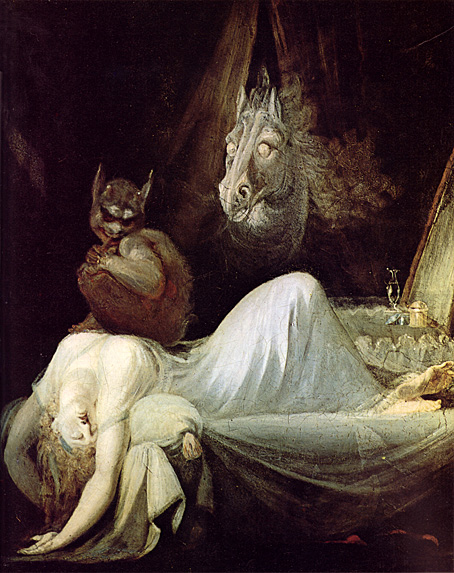The Nightmare (second version, c. 1790) by Henry Fuseli.
“There’s something those fellows catch–beyond life–that they’re able to make us catch for a second. Doré had it. Sime has it. Angarola of Chicago has it. And Pickman had it as no man ever had it before or–I hope to heaven–ever will again.” (Pickman’s Model, 1926)
Despite a reputation for evasive description, H.P. Lovecraft’s visual imagination sustains many of his most celebrated stories; along with birthing his most famous creation, Cthulhu. He made small sketches now and then, including what’s probably the first ever picture of Cthulhu, and while writers and academics are common characters in his work he gave us two notable artist figures: ghoul-portraitist Richard Upton Pickman, and Henry Anthony Wilcox, the “precocious youth of known genius but great eccentricity” whose curious bas-relief leads to Professor Angell’s revelations in The Call of Cthulhu.
The monologue of Pickman’s Model features some discussion of the power and suggestiveness of art, showing a fascination for art’s ability to give us a glimpse of the visually uncanny. Lovecraft spent time seeking this quality in visual art as well as in the stories of earlier writers. The following list gives us an idea of the kind of art which fueled his imagination.
So who did Howard like?
Note: The hard work of harvesting the names was done by one of the curators at hplovecraft.com where they also have comments from HPL about each artist.
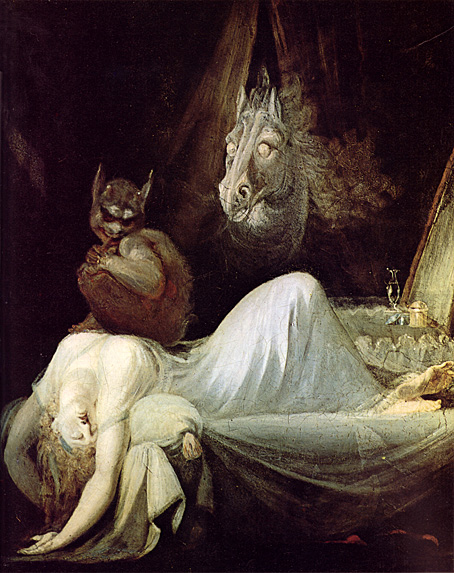
Henry Fuseli (1741–1825): A British painter who produced an unforgettable image of nocturnal horror in The Nightmare. A very popular picture at the time it was painted (hence the two versions), this was a favourite painting of Lovecraft’s as well as being the one Fuseli that most people have seen. But much of Fuseli’s other art is grotesque and macabre even for the Romantic era, with a profusion of witches, ghosts and monsters.
![]()
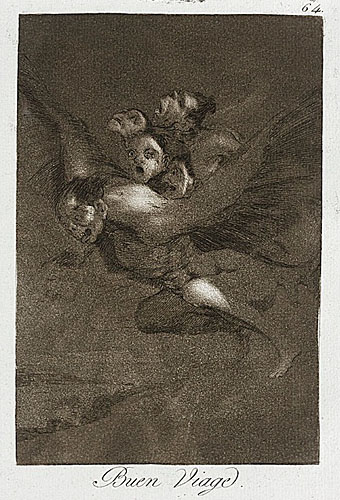
Francisco Goya (1746–1828): Goya receives a mention in Pickman’s Model for an oeuvre as laden with witches and monsters as Fuseli’s. Many of these are in the Caprichos, a series of aquatint prints which are often satirical in intent but which show the range of the artist’s imagination. For Pickman HPL may have had in mind the so-called Black Paintings which decorated the wall’s of the artist’s home. It tells us something about Goya’s character that he painted Saturn Devouring His Son on the wall of his dining room.
![]()
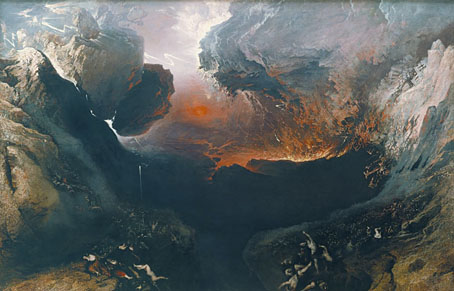
John Martin (1789–1854): “Mad” John Martin was written off for years as an eccentric imitator of JMW Turner but his scenes of Biblical apocalypse have caught the imagination of those who enjoy the visionary and sublime in painting, Lovecraft included. His huge canvases toured Britain where they were displayed in lecture shows to audiences eager for a glimpse of what might be awaiting them (or punishing their neighbours) in the afterlife. He also illustrated Milton’s Paradise Lost in a series of mezzotints.
![]()
Gustave Doré (1832–1883): One of the most popular and successful illustrators of his day, Doré worked with an army of engravers to embellish the world’s greatest books. Like John Martin he too illustrated Paradise Lost but where Martin gives us the grandeur of infernal architecture, Doré concentrates on the figure of Satan and a host of fallen angels whose spiky wings Lovecraft believed had inspired his dreams of the Night-Gaunts. Also of note are Doré’s illustrations for Dante’s Inferno, The Rime of the Ancient Mariner and the fantastic scenes in Ariosto’s Orlando Furioso.
![]()
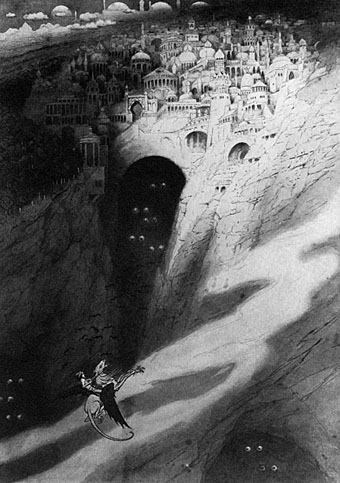
Sidney Sime (1867–1941): Sime worked as a magazine illustrator before becoming Lord Dunsany’s artist of choice for his many fantasy stories, hence Lovecraft’s familiarity with his work. There isn’t much to see online, unfortunately, but the Internet Archive has several Dunsany titles as free downloads, all of them with the Sime illustrations: A Dreamer’s Tales, The Book of Wonder, and Tales of Wonder.
![]()
Nicholas Roerich (1874–1947). It’s in the opening pages of At the Mountains of Madness that Lovecraft mentions “the strange and disturbing Asian paintings of Nicholas Roerich,” and the chill of icy desolation which he found in the paintings at the Roerich Musuem, New York, may have influenced his conception of an alien-haunted Antarctica. Roerich’s stern, sage-like presence also gives us a surprising link between Lovecraft and Igor Stravinsky: Roerich designed the stage sets for The Rite of Spring and helped the composer craft its scenes of pagan ritual.
![]()
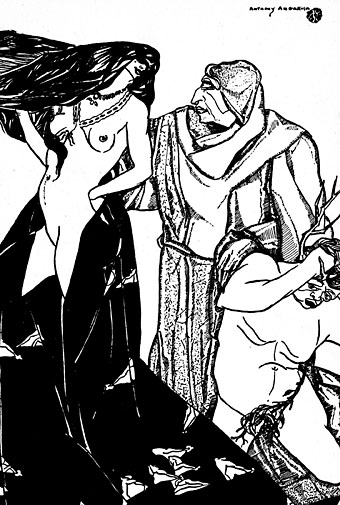
Anthony Angarola (1893–1929): I wondered for years who Angarola might be and what he might have created to warrant a mention in Pickman’s Model. Having seen his some of his work I now wonder what Lovecraft saw in it over the work of other artists. Matters aren’t helped by there being little of his painting to be seen online but Lovecraft may have favoured Angarola’s illustrations for The Kingdom of Evil (1924) by Ben Hecht, a quasi-Decadent fantasy that’s a sequel to the far more scurrilous Fantazius Mallare: A Mysterious Oath (1922). The first book had superior illustrations by Wallace Smith but the sexual content of the novel would have appalled Howard. (The book was subject to an obscenity prosecution.) There was talk of Angarola illustrating The Outsider before his untimely death; had he managed this he’d be a lot better known today.
![]()
Virgil Finlay (1914–1971): Calling Virgil Finlay a great pulp illustrator is something of a slight, he was a great artist who happened to work for the magazines, and he’s also the only name here who illustrated Lovecraft’s works. A Finlay illustration for Robert Bloch’s story The Faceless God inspired a Lovecraft sonnet; the artist returned the compliment with a portrait of HPL. Golden Age Comic Book Stories has a selection of his meticulous work here and here.
John Coulthart is an illustrator and graphic designer. His collection of Lovecraft comic strip adaptations, The Haunter of the Dark and Other Grotesque Visions, is published by Creation Books.










